| Started on ventilation |
Working on the exterior this week |
We planted our apple trees
This week my Harmor book was translated into Chinese! The wood-stove was delivered. We replaced the fascia boards. We planted the apple trees.
Monday 30 November
 Today it was a very grey, dull day. It was as if the day never started. The entire day became a dusk morning.
Today it was a very grey, dull day. It was as if the day never started. The entire day became a dusk morning.
Our electrician turned on the line to our neighbor at our new house, and I suppose that was it on his part.
In the evening, I went to the new house and continued working on the planks and the fascia boards. Both the planks and the fascia boards came to us painted, but the revealed surfaces need to be protected when cutting them to the correct size.
I sanded the ends and the sides. The surfaces need to be sanded. The idea is that the surface should be smooth so that water droplets are not trapped. It is also so that sharp edges can hardly hold any paint. Sharp edges need to be rounded so that the paint can stick. The fascia board sides were painted with a water-based product called a sealer. For the planks, we are using a system color good for both grounding and the top layer. These are quick-drying paints. I can paint the next layer tomorrow evening. The fascia boards will get a final white layer on top, which took a long time to dry last time. For the top layer, we bought a turpentine based paint. That is not so convenient for the environment. We will try to use water-based paint going forward.
It is not so that our future helophyte filter will like rests of paint. Not water-based nor turpentine based. We will need a solution for this anyway. I am thinking of a system drying the water so that dry rests can be treated as regular dry garbage. For this plan, I will avoid turpentine based paint going forward. I use a little bit of turpentine for my art paint, but I will store those rests and bring them to the garbage reclaim center.
Tuesday 1 December
 Tonight I went to the new house to paint the second layers on my planks and boards, and I was surprised to see the two Mo work in the house. They were putting up ventilation pipes for the ventilation system. We discussed the progress, and soon after, the two Mo’s packed all their tools and went home.
Tonight I went to the new house to paint the second layers on my planks and boards, and I was surprised to see the two Mo work in the house. They were putting up ventilation pipes for the ventilation system. We discussed the progress, and soon after, the two Mo’s packed all their tools and went home.
I continued to sand the surfaces I painted yesterday. I noticed that the fibers of the board risen when painted. Before painting, I had a smooth, sanded surface. After the paint has dried, many of the fibers are kind of sticking out again. Since I am looking for a smooth surface, I sand again and paint another time. Next time there are no loose fibers that will stick out. It has to become smooth not. We will see.
 Three years ago, I wrote a book about a synthesizer plugin Harmor of the Digital Audio Workstation program FLStudio. Today I published the Chinese translation of the book [Link will be posted later...]. The translation is done by Mr. Fuhau. It is a great honor for me to have the work translated because it indicates that the work has real value. You should realize it is much work to translate. Mr. Fuhau took on this challenge because he saw that the Chinese world would benefit from getting access to this book in their own language. I suppose the people at Image-Line are also happy, not to mention all Chinese that can read the text and learn about the synthesizer.
Three years ago, I wrote a book about a synthesizer plugin Harmor of the Digital Audio Workstation program FLStudio. Today I published the Chinese translation of the book [Link will be posted later...]. The translation is done by Mr. Fuhau. It is a great honor for me to have the work translated because it indicates that the work has real value. You should realize it is much work to translate. Mr. Fuhau took on this challenge because he saw that the Chinese world would benefit from getting access to this book in their own language. I suppose the people at Image-Line are also happy, not to mention all Chinese that can read the text and learn about the synthesizer.
Wednesday 2 December
This was a regular Wednesday with a half-day off. It was a dull day again. Today, the plan was to mount the missing plank on the east side, paint the fascia boards, and measure and create a new batch of planks above the windows.
When I nailed on the missing plank, a large chunk broke off from the plank’s upper left corner. The piece fell to the ground, and I was standing there, clueless about what happened. The nailgun is pneumatic, and it shoots the nails with great force. If there are twigs in the wood, then the plank can be more fragile. I decided to glue on the missing piece another day.
 My wife started painting the fascia boards. This time the fronts. She paints them with glossy white paint. Since we will also do other dusty things in the working room, I suggested she paint the fascia boards’ fronts atop the pile of the floorboards we moved last Wednesday. In the working room, we could then continue with red planks.
My wife started painting the fascia boards. This time the fronts. She paints them with glossy white paint. Since we will also do other dusty things in the working room, I suggested she paint the fascia boards’ fronts atop the pile of the floorboards we moved last Wednesday. In the working room, we could then continue with red planks.
 While she painted the fascia boards, I measured what we needed for above the top windows.
While she painted the fascia boards, I measured what we needed for above the top windows.
When I was working on the measurement on the east side of the house, I noticed a truck driving across the field that is still undeveloped. This is a cone penetration test vehicle. Actually, the cone penetration test is a Dutch invention, but it is used worldwide. The vehicle can push a cone on a probe into the soil measuring the soil’s bearing capacity. This land here is reclaimed sea, and there is a thick layer of clay that cannot hold up any permanent buildings. At different layers, there is sand followed by yet another layer of clay, and so on. Sometimes the sand layer is thicker and a specific depth. When it is time for building, depending on the house’s weight and the sand layer’s depth and thickness, poles are pushed into the ground to the correct depth. That depth is calculated with the cone penetration test. Such a vehicle indicates that the next batch of buildings is about to start in this field. The truck, by the way, has regular wheels, but it also got continuous tracks. Just before driving off the road, it lowers the tracks and lifts the wheels of the ground. Then it drives on the continuous tracks.
 My measurements of our next set of planks gave us that they were going to be short. The tallest was about one meter long. We could use many of the rest pieces we had lying. This was great. We sanded them, and I painted the first layer on the ends of these planks.
My measurements of our next set of planks gave us that they were going to be short. The tallest was about one meter long. We could use many of the rest pieces we had lying. This was great. We sanded them, and I painted the first layer on the ends of these planks.
We got a short visit from our neighbors that we provide with electricity. They are happy that their floors can start drying.
Our wood-stove specialist also came to us today. We agreed on he will come with the stove and install it, even though the floor is unfinished.
Thursday 3 December
 I could not sleep well last night. I was thinking about the ventilation system in the house. When I say that a heavyweight is lifted from my shoulders when the system is in place, I am apparently not exaggerating. It was a regular day to day, not so warm and very dull indeed. I worked from our old home, and after work, I went to the new house and painted the second layers.
I could not sleep well last night. I was thinking about the ventilation system in the house. When I say that a heavyweight is lifted from my shoulders when the system is in place, I am apparently not exaggerating. It was a regular day to day, not so warm and very dull indeed. I worked from our old home, and after work, I went to the new house and painted the second layers.
It is absolutely no challenge to paint too thick layers of paint. However, painting thinner layers is more of a challenge. Last time I slabbed on a thick layer on the fascia board. It took several days to dry correctly. This time I am aiming for that, I can mount these boards the coming weekend, and with that, the top corner of the east side is finished. That would be fantastic. The date for installing the helophyte filter has not yet been set, so I still hope we can finish the entire east wall, but it will be a close call. For this, I need to paint thin, and it gives much more resistance to the brush. At some point, I used both hands to hold the brush and spread the paint. We bought turpentine based paint for the fascia boards. It was the last time we did that. From now on, we will use a water-based paint for the boards. I need to bring the brush to our old home to wash it there. That is inconvenient.
I got an abrasion on my right hand from painting the boards!
 The planks are comfortable painting, though. It takes perhaps twenty minutes to paint the planks’ ends, and it is water-based paint, not smelly. When done, I can put the brush in a cup of water, and it is fine until the next time a couple of days later. That is much better. It is not possible to pour the water into our future helophyte filter, though. We will need to store the wastewater of water-based paint and let it evaporate, and then it is possible to bring the solid waste to regular waste collection.
The planks are comfortable painting, though. It takes perhaps twenty minutes to paint the planks’ ends, and it is water-based paint, not smelly. When done, I can put the brush in a cup of water, and it is fine until the next time a couple of days later. That is much better. It is not possible to pour the water into our future helophyte filter, though. We will need to store the wastewater of water-based paint and let it evaporate, and then it is possible to bring the solid waste to regular waste collection.
Tomorrow I think I will have a day off from working in the new house.
Friday 4 December
I was wrong. Just before my lunch break, our wood-stove specialist Dick called me. “Are you at the new house?” Well, no, I was working from our old home. He insisted that he would deliver the final wood-stove today. It is getting cold, you know, and I got that thing, and where will I keep it?
I decided to go on an extra-long lunch. Then I would compensate for that at another time. I went to the new house, and soon after I arrived, Dick arrived too.
|
Really far away you can see the van with the new wood-stove driving towards our new house. |
|
|
What is he doing? He drives past the driveway and plans to reverse in on the driveway. Clever. |
|
|
He did not crash into the bench along the driveway. Well done! |
|
|
So that is a perfect place. Now you can stop. |
|
|
The doors at the back of the van open, and out comes the stuff. First, are two autoclaved aerated concrete blocks unloaded. This material has many names around the world. It is concrete that is very lightweight. |
|
|
Then the stove is unloaded from the van, and it is all but light. |
|
|
We bring it into the house. Put it on the light concrete blocks. The concrete blocks roughly represent the height that the final floor will be. |
|
|
Then Dick cut a pipe to the correct length. |
|
|
And there it is, standing on the lightweight concrete blocks. Installed and ready to be fired up. But that is for another time. Dick and I left the building site. When I came back to our old home from my more extended than usual lunch break, my manager commented that it was actually a really long lunch break. |
Tomorrow we will fire up the stove to see how it works. The old stove was shoved to the side, and it is standing next to the new stove. We will see where we will put it. Right now, I have no good idea of where to put it.
The new stove is standing closer to the wall, and it is also far more efficient. I hope that we can actually heat the west part of the house pretty well. The stove is not dimensioned for being the primary heating source since we plan for a regular heating system. This is a four-kilowatt stove. It will work as an auxiliary heating source, mainly for pleasure. Well, now until we got our regular heating system installed, this is more than a pleasure. The temporary stove was not efficient at all. It sucked the heat and the wood and was great fun, but that was all there was to it.
Saturday 5 December
 The first task of today was to read the manual for the new wood stove. It had to be appropriately inaugurated.
The first task of today was to read the manual for the new wood stove. It had to be appropriately inaugurated.
 It was a pleasant stove. The burning was efficient, and I dare to say we have not seen a stove burn as efficient as this stove.
It was a pleasant stove. The burning was efficient, and I dare to say we have not seen a stove burn as efficient as this stove.
 The first outdoor task was to mount the planks on top of the windows of the first floor. The weather was beautiful in the morning. Towards the afternoon, there came more clouds.
The first outdoor task was to mount the planks on top of the windows of the first floor. The weather was beautiful in the morning. Towards the afternoon, there came more clouds.
 The second outdoor task today was to put up the new fascia boards on the east side of the house, and this time they were painted correctly, and they had the correct angle. The last time we worked on the fascia boards, 12 September, they got the wrong top angle. We have learned a lot since then. At that time, the boards were not that wide, so that moisture could get in behind the planks much easier. Now that is fixed. I can admit the angle was not spot on, but it was doable. My wife applied the kit so that the end result was magnificent.
The second outdoor task today was to put up the new fascia boards on the east side of the house, and this time they were painted correctly, and they had the correct angle. The last time we worked on the fascia boards, 12 September, they got the wrong top angle. We have learned a lot since then. At that time, the boards were not that wide, so that moisture could get in behind the planks much easier. Now that is fixed. I can admit the angle was not spot on, but it was doable. My wife applied the kit so that the end result was magnificent.
Finally, we planted one of the apple trees in a permanent spot. After this was done, we had more time and energy over, and we were aiming to measure and prepare the planks for the next batch, but that did not work out. We got sitting in front of our new wood stove drinking tea with friends, and it was delightful.
Sunday 6 December

The first thing we did was to lit a fire. Of course. Next, we sanded and painted the planks forming the outer layer above the window on the east wall’s first floor.
|
At first, I thought I had dirt on the lens, but I think he dropped something. |
|
|
Perhaps it is a bit presumptuous of me, but is this not a sloppy style? Usually, the birds are quick in getting the landing gear tucked away. This bird lets them hang loose. |
|
|
That is more like it. |
|
|
This buzzard is looking for a snack. |
|
|
This snack was staying at our stack of pallets that we collected. |
|
|
This is the same bird as in my first picture. Here the bird is looking the other way, but it is nevertheless an exciting picture. It is such a big bird. He also came and sat on our scaffold, and I even opened the window to take a picture of him from 5 meters away, but I fumbled with the camera and missed the shot. |
|
|
Here the buzzard is sitting in the apple tree. Later in the evening, we took this tree out of the pot and moved it to the final place. You can see the dirt road in the background, and it is living up to its name. |
The birds are looking for vantage points. Perhaps we should create more vantage points. From the rest of the red planks, we could also make birdhouses—plenty of ideas.
We measured the planks next to the door and the window. When we have those done, then the space between the windows is done from top to bottom. That will be great. I will need to paint them next week to finish that set of planks.
The next two sets of planks are the first layer outside the door and window of the east wall’s left side. On the right side, the same. We finished measuring these planks. I come to the conclusion it is quicker to measure together. One person at the top of the scaffold and another at the ground taking notes of the lengths. The drawback of this is that it forms a bottleneck because both of us need to be available. As soon as the measurements are written down, several tasks can be carried out alone.
When we finished measuring the planks, it was almost dark. That did not stop us! We went ahead and planted the last of the two apple trees. We got the trees on 16 May. Oh my goodness, how clean the car was on 16 May! These days I keep telling myself I love it that the car is the dirtiest car of all cars in the street of my old house. When it starts to grow grass in the mold, it is perhaps time to wash the car?
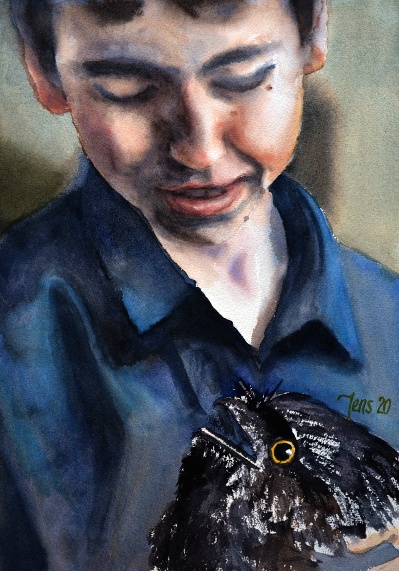

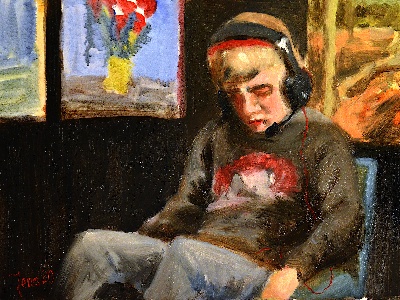
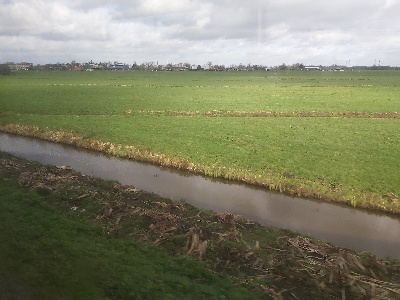



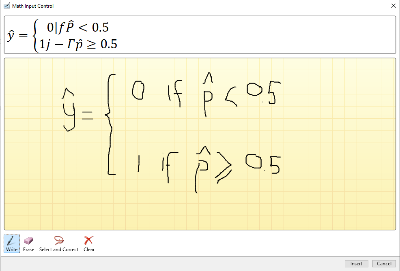
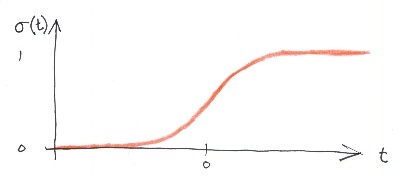
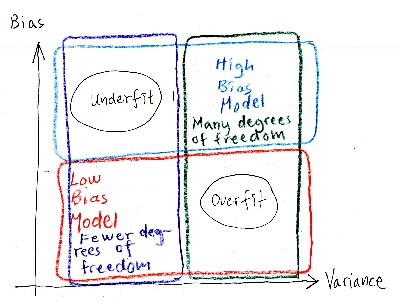

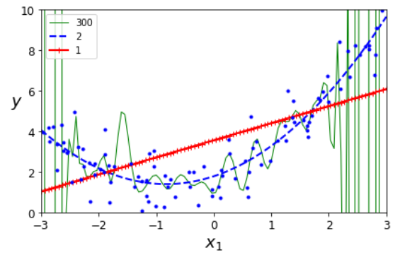


 Continued to empty the sea containerEmptying the sea containerStarted to empty the sea containerPickled cuecumberThe next phase of the barn can startWe got back the repaired lawnmowerNext phase of the barn finalizationApplied gypsum boards to the ceiling of the barnGypsum boards in the barnPainted and distributed the cubes along the roadFinished OSB boards on the west wall of the barnTiles and OSB boardsStarted applying boardsPreparations for the growing seasonFetched planks
Continued to empty the sea containerEmptying the sea containerStarted to empty the sea containerPickled cuecumberThe next phase of the barn can startWe got back the repaired lawnmowerNext phase of the barn finalizationApplied gypsum boards to the ceiling of the barnGypsum boards in the barnPainted and distributed the cubes along the roadFinished OSB boards on the west wall of the barnTiles and OSB boardsStarted applying boardsPreparations for the growing seasonFetched planks I moved from Sweden to The Netherlands in 1995.
I moved from Sweden to The Netherlands in 1995.
Here on this site, you find my creations because that is what I do. I create.















